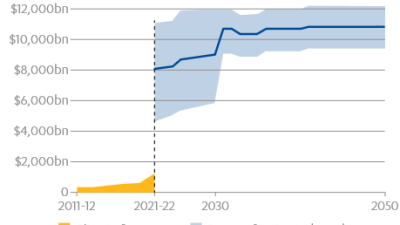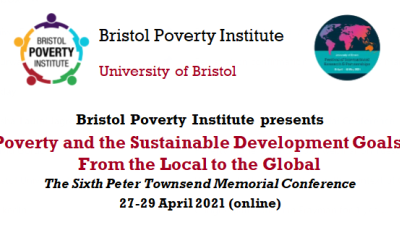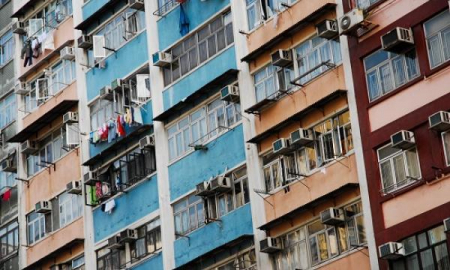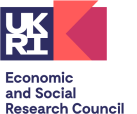The Social Disadvantage, Well-being and Health project (SDWH-HK), follows on from the 2013 PSE-HK project. While official measures of poverty in the territory use just income, SDWH-HK, like PSE-HK, uses wider measures of deprivation and social exclusion, as well as income. Below read more about their findings on housing stress, access to medical care and the differences between adults' and children's attitudes to necessities.
SDWH-HK overview
There are three strands to the project:
- Poverty, Social Disadvantage and Exclusion: This strand develops instruments to calibrate and measure poverty in Hong Kong and, through the re-interviewing of respondents the previous 2013 PSEHK survey. By collecting this longitudinal data, it can assess trends and gauge the impact of policy intiatives. It has a particular focus on the working poor, the elderly and CSSA (welfare) recepients.
- Poverty, Disadvantage and Children's Wellbeing: This strand uses the newly developed instruments to focus on young people and children and intergenerational poverty.
- Poverty, Disadvantage and Health Inequality: Ths strand focuses on health inequalities and place.
From June 2014 to August 2015, the Living Standards Survey undertook face-to-face interviews with 2,228 adults and children. The sample was drawn from re-interviews with respondents to the previous 2013 PSE-HK survey and a new sample taken from the 2011 population census. In the second wave of this sruvey, these participants were re-interviewed between February 2016 and March 2017.
Housing stress
Hong Kong suffers from severe housing affordability stress despite being one of the most developed places in the world. In 2018, the affordability ratio of Hong Kong was the highest in the world at 20.9, meaning that the median cost of a dwelling in Hong Kong is 20.9 times the annual median pretax household income, by contrast the ratios were 8.3 in London, 5.5 in New York and 4.6 in Singapore.
The 2019 SDWH-HK project report on housing affordability and housing stress assesses the potential mediating role of deprivation of necessities on the association between housing affordability and health in Hong Kong.
The study found the the lower the housing affordability, the worse the physical and mental health. Despite taking into account the effects of other sociodemographic, socioeconomic and lifestyle factors, housing affordability stress still independently poses threat to both physical and mental health, and the association with mental health was particularly strong. We also found significant indirect effects of deprivation on the association of housing affordability with both physical and mental health in the mediation models, in which proportion of effect mediated through deprivation was larger for physical health (34.3%) than for mental health (15.8%). The report concludes
'To improve the health of the Hong Kong population, the problem of housing affordability should be targeted. Additionally, deprived individuals should also be targeted for any ntervention or policy to tackle health inequality as deprivation of necessities helps exacerbate the problems of unaffordable housing costs. Since housing affordability tends to be a more upstream factor than deprivation in the pathway to health status, strategies and policies to tackle the housing issue are important. Jurisdictions around the world should take the example of Hong Kong as a major lesson if they aim to eliminate health inequalities—even in a rich society with publicly available healthcare services and high levels of public housing provision like Hong Kong, allowing housing costs to rise too high has negative health consequences for the population.' Chung RY- N, Chung GK- K, Gordon D, et al. (J Epidemiol Community Health, November 2019)
'Read more in:
'Housing affordability effects on physical and mental health: household survey in a population with the world’s greatest housing affordability stress' (pdf), Chung RY- N, Chung GK- K, Gordon D, et al., J Epidemiol Community Health, November, 2019.
Medical care
Hong Kong has some of the best health outcomes - such as life expectancy - in the world. Nevertheless, the latest findings suggest that inequity in health care remains a critical issue in the region.
Analysis of the “Trends and Implications of Poverty and Social Disadvantages in Hong Kong: A Multi-disciplinary and Longitudinal Study” survey, conducted by the SDWH-HK research team between June 2014 and August 2015, found that 8.4% of participants did not seek medical care due to lack of financial means during the past year. These participants tended to have higher levels of both anxiety and stress, poorer physical and mental health-related quality of life, and suffer from more severe disability and pain symptoms affecting their daily activities, when compared to the rest of the Hong Kong population. People who were denied of medical care due to financial barriers are generally sicker than people in the general Hong Kong population, implying that those with greater healthcare needs may have financial difficulties in receiving timely and appropriate medical care.
The study concludes that while in the short run expanding the existing government-led Healthcare Voucher Scheme, specifically for older adults at present, to cover disadvantaged middle-aged adults might be an option for improving access among the poor, in the long run, 'strengthening of the publicly funded primary care system will be the key to achieving UHC in Hong Kong.'
Read more in:
'What are the financial barriers to medical care among the poor, the sick and disabled in the Special Adminstrative Region of China' (pdf), Samuel Yeung-shan Wong , Roger Yat-nork Chung, Dicken Chan, Gary Ka-ki Chung, Jerry Li, Dominic Mak, Maggie Lau, Vera Tang, David Gordon, Hung Wong, November 2018, Plos One. https://doi.org/10.1371/journal.pone.0205794
Do adults and children have different views?
In the 2016/17 Living Standards Survey investigate whether adults and chuildren had a different perception as to what was necessary for children in Hong Kong today. They found, surprisingly, that adults were more likely to see items as necessary than children. This was true for all 14 child items tested. See the table below. This shows the percentage of children and of adults who think each item is a necessity. Colour gradients have been applied to reflect the percentage of each group that thinks that item is ‘necessary’ going from red for 100% support through orange and yellow to green for 0%. The table can be sorted by column.
Children's and adults' views of necessities, Hong Kong, 2016/17
Source: 'Children's and Adults perceptions of necessites', Lau et al, 2019
The table shows that while children and adult have similar views on the ranking of the items, adults are significantly more generous. Adults viewed all 16 items as necessary (ranging from 69% to nearly 100% support) while children viewed 14 items a s necesssary (ranging from 53% to 95% support) and two items - family day trip and brand name trainers - as not necessary. Aprat from a mobile phone, the differences were found to be statsitically signifant for all items. There was a striking contrast between children’s and adults’ perceptions of child necessities concerning 'school extras' (e.g., 'participation in extra-curricular activities', 'a computer with internet' and 'tutorial lessons'), which are possessions and activities that are considered to be essential for children’s educational and social development in many rich societies.
The study suggests further research is needed to see how perceptuions of necessities change as young people transition into adulthood.
For more details see: 'Children's and Adults perceptions of necessites of child necessities of Hong Kong' (pdf), Lau et al, 2019 (SPA accepted for publication).




 PSE:UK is a major collaboration between the University of Bristol, Heriot-Watt University, The Open University, Queen's University Belfast, University of Glasgow and the University of York working with the National Centre for Social Research and the Northern Ireland Statistics and Research Agency. ESRC Grant RES-060-25-0052.
PSE:UK is a major collaboration between the University of Bristol, Heriot-Watt University, The Open University, Queen's University Belfast, University of Glasgow and the University of York working with the National Centre for Social Research and the Northern Ireland Statistics and Research Agency. ESRC Grant RES-060-25-0052.






